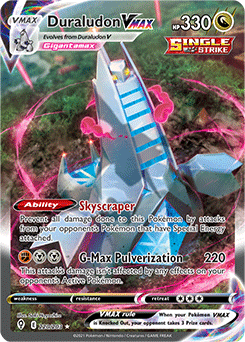New Format, New Problems — Lessons and Highlights from EUIC
Hello PokeBeach readers! Here’s Gabriel Semedo again with another Pokémon TCG article, and this time, I’m going to talk about the European International Championship (EUIC). Many new ideas came to light, and I believe that now is the ideal time to absorb them.
EUIC brought more changes than usual. It was the first official tournament with the new format rotation, and it was also the first with the new set Scarlet & Violet. Usually one of these changes is more than enough to affect a format on its own, but combined in a tournament like EUIC, the change was much bigger, and left many players lost and anxious. The last time I witnessed this new-set-and-rotation scenario was at Worlds 2019, and I remember that it required a lot of testing to understand the format and build a strong deck in such a short time.

Unfortunately, I couldn’t be at EUIC, but I helped my friends prepare for the competition. In testing, I realized that this would be a format with many new features. The challenge was to make the strongest decks of the past format, like Mew VMAX, Lost Box, and Lugia VSTAR, continue to work in a similar way, and try to come up with the best version for new decks like Gardevoir ex and Miraidon ex. And if you do all that — if you prepare and train to the best of your ability — maybe you will find a way to win in this format. That’s what EUIC winner Alex Schemanske did with his Arceus VSTAR / Duraludon VMAX deck.
EUIC will serve as a solid testing basis for many players, as the information we learned from it will be useful for at least a few weeks. Before, most of what we knew about the format came from tournaments in Japan, but lists have only been refined since then, increasing consistency and dropping techs.
If the tournaments in Japan served as inspiration, then by the point of EUIC we have achieved a great reference for copying decks wholesale. The EUIC lists are close to perfection and have much less space for exploration and evolution. It is at this point that the format switches to another level, because most lists used in major tournaments from now on will be comparable to the EUIC lists, with only minor tweaks depending on the metagame. In today’s article, I will highlight some information that caught my attention at EUIC, which I believe will be critically important in future tournaments.
Arceus / Duraludon / Vulpix (Alex Schemanske)
Duraludon VMAX
The combination of Arceus and Duraludon is already well known, but it has so far stood out best when nobody has been thinking about it. The funny thing is that everyone knew that Lugia VSTAR would lose easily to Duraludon VMAX, but most Lugia players simply chose not to do anything about it. This secured some good wins for Alex.
Alolan Vulpix VSTAR
If Duraludon VMAX serves to beat Lugia VSTAR, Alolan Vulpix VSTAR serves to beat Gardevoir ex, and can help in several other matchups, too. There are few Pokémon in the format that can handle Alolan Vulpix VSTAR, but it certainly didn’t help that at EUIC most players weren’t even expecting to have to deal with it in the first place.
All decks can Knock Out an Alolan Vulpix VSTAR somehow. The point is not to win an entire match with Alolan Vulpix VSTAR, but to annoy and cause problems for the opponent until you have enough of a setup to score your remaining Prizes.
Four Professor’s Research plus Three Colress’s Experiment
I saw no one talking about it, but this was one of the things in the list that most caught my attention. One of the complaints about Arceus VSTAR in this format is that it doesn’t have the consistency it once did. Cards like Trekking Shoes and Bibarel are the most popular solutions to this problem, but they eat up deck space and still don’t solve the problem completely.
Much of the consistency of an Arceus VSTAR deck depends on Arceus itself, as with each attack it lets you take three Energy cards out of the deck and put them on the field. Two attacks mean six fewer cards in the deck, and so on. The deck’s long-term consistency plan is built around this withdrawal. Basically, you only need one good draw Supporter every turn, and the rest will work itself out over time.
The idea, then, is to simply play more good draw Supporters. Even if you need to use a different Supporter like Judge, Boss's Orders, or Cheren's Care, you will be greatly relieved if you have a Colress's Experiment or Professor's Research in your hand to go back to drawing cards the next turn.
This concludes the public portion of this article.
If you'd like to continue reading, consider purchasing a PokeBeach premium membership! If you're not completely satisfied with your membership, you can request a full refund within 30 days.
Each week we post high-quality content from some of the game's top players. Our article program isn't a corporate operation, advertising front, or for-profit business. We set our prices so that we can pay the game's top players to write the best content for our subscribers. Each article topic is carefully selected, goes through multiple drafts, and is touched up by our editors. We take great pride in our program!

